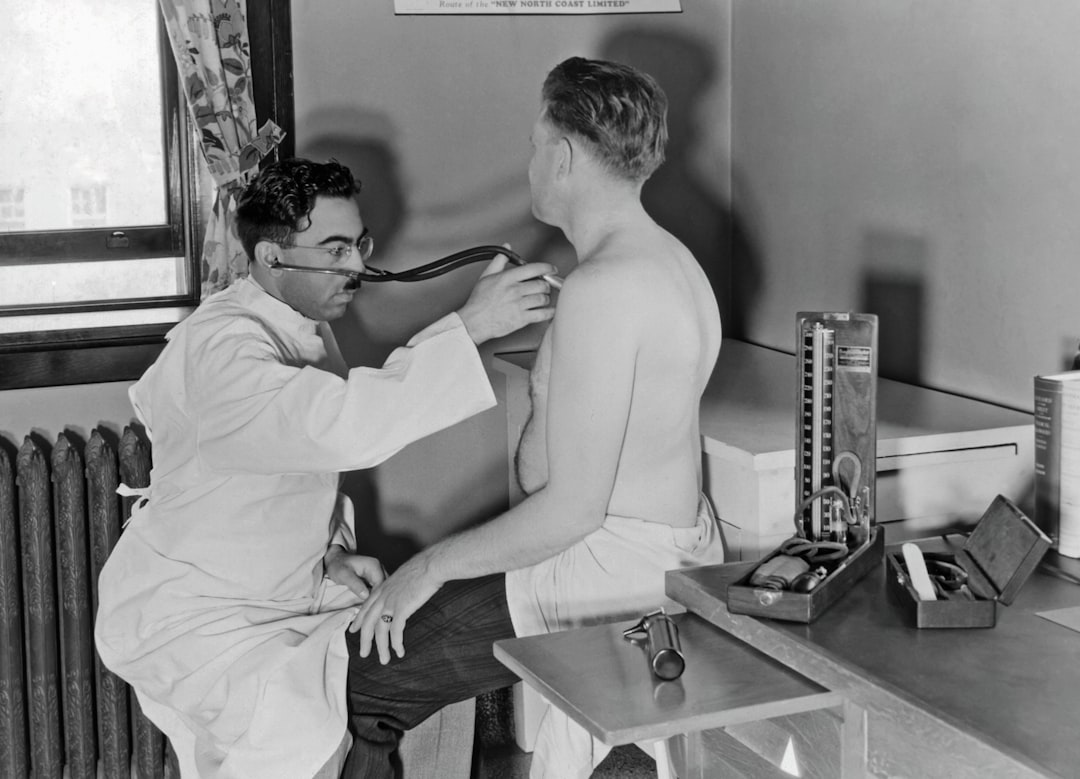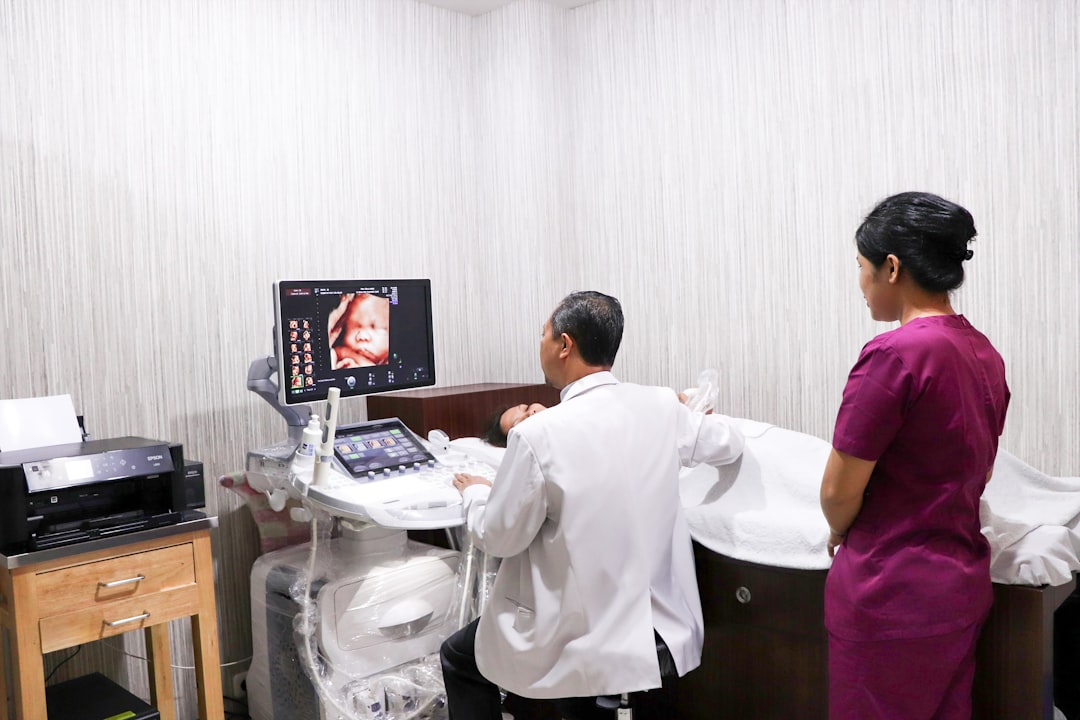

Engage prospects with a scan and streamline customer engagement with FREE QR code marketing tools by Sona – no strings attached!
Create a Free QR CodeFree consultation

No commitment

Engage prospects with a scan and streamline customer engagement with FREE QR code marketing tools by Sona – no strings attached!
Create a Free QR CodeFree consultation

No commitment
In today’s digitally driven world, QR codes have rapidly transitioned from a simple convenience to a powerful tool for bridging offline engagement with online outcomes in men’s health clinics. These codes empower providers to turn routine patient interactions, such as intake, follow-up, or feedback collection, into seamless, trackable digital moments, all without the friction of app downloads or complex onboarding.
For men’s health clinics, where efficiency, confidentiality, and data-driven improvement are crucial, QR codes represent a high-impact solution for gathering authentic feedback and enriching the patient experience. Many clinics grapple with missed opportunities in gathering actionable patient input, frustratingly slow feedback cycles, and inconsistent data quality. With regulatory requirements tightening and patient privacy more important than ever, old methods like paper surveys fall short, often leaving decision-makers in the dark about areas for improvement.
By embedding QR codes into various touchpoints such as print materials, signage, appointment cards, or digital signage, clinic operators gain the ability to capture richer, more timely data and ensure every patient has an easy path to share their perspective. The result is higher engagement, improved reputation management, and more precise, actionable knowledge for compliance, patient experience, and continuous growth. This guide reveals strategies to harness QR codes for effective feedback collection, address regulatory standards, and fuel a patient-centric approach for sustainable growth in men’s health clinics.

Collecting relevant patient feedback is a persistent challenge for men’s health clinics. Paper-based surveys are often lost or ignored, which leads to data gaps and overlooked dissatisfaction. QR codes close this loop by streamlining the transition from physical visits to digital feedback while minimizing friction and privacy concerns. They enable patients to contribute their perspective in seconds, with no login, no app, and no instruction sheet required.
Beyond convenience, QR-powered feedback programs can be targeted by visit type, location, or provider, which allows you to collect the right kind of insight at the right time. When the experience is intuitive and privacy-forward, completion rates rise, qualitative feedback improves, and your team can act faster on what matters most.
Modern QR platforms like Sona QR’s product overview allow real-time updates to destinations, flexible branching logic, and deep integrations with EHR or CRM systems, which means your team can evolve forms without reprinting signage. Centralized dashboards reduce manual entry errors, create an audit trail, and turn every scan into a measurable signal you can act on.
Men’s health clinics often struggle to move patients from offline visits to actionable online engagement. Without a frictionless path to respond, patients forget, feel uncertain about privacy, or simply never make it to the right web page. The result is a skewed understanding of patient satisfaction and service gaps, with leadership relying on anecdote rather than real data.
QR codes solve this by providing instant access to digital actions that match the moment in medical marketing. Whether a patient is in the waiting area or reviewing a visit summary at home, a single scan can trigger a secure, purpose-built experience that collects feedback, books follow-ups, or delivers personalized education.
Clinics that add QR codes to appointment summaries, post-visit receipts, and prescription packaging often see higher participation in feedback and reviews, fewer missed engagement opportunities, and a clearer picture of patient needs. Over time, this produces a more patient-centered culture that is grounded in real signals rather than assumptions. For vertical-specific strategies, explore Sona QR’s industry hub.

Not all QR codes serve the same purpose, and men’s health clinics must consider privacy expectations, clarity, and next-step intent. Many clinics benefit from a mix of formats that guide patients to the right digital destination with minimal friction while respecting confidentiality.
When selecting formats, align the code with a single clear action. If you ask for too many things in one place, completion rates fall. Use dynamic QR codes wherever you anticipate content changes or need to track performance by placement, location, or audience.
Dynamic QR codes can rotate destinations by time of day, location, or capacity. For example, a waiting room code can lead to a feedback form in the evening and to a check-in survey during morning intake. This flexibility keeps your experience relevant and your data pipelines full of actionable insights.

Uneven feedback and missed engagement signals often occur because requests sit where patients are least likely to notice them or when they are least likely to respond. The key is to map QR placements to the genuine patient journey and the physical context. Align the call to action with what the patient is doing or feeling in that moment.
Start with a site walk-through to identify high-dwell zones and decision points. Shadow the patient journey from entrance to discharge, then review at-home touchpoints like direct mailers and post-care instructions. Every place where attention is high and privacy is respected is a candidate for a QR code.
Placing QR codes at moments of privacy and focus improves participation and data quality. In contrast, crowded hallways and noisy waiting rooms may not be ideal for anything more than a simple prompt to return later. Use your analytics to validate where scans and completions are strongest, then adjust placements accordingly.

Without an easy, centralized feedback process, clinics risk losing track of which patients are satisfied, who needs attention, and where reputation vulnerabilities might exist. QR codes create a reliable, consistent pipeline for patient signals across services, locations, and visit types.
Well-designed use cases start with clarity. Decide what you want the patient to do and why it benefits them. Keep each QR experience tight and privacy-forward. Then link it to your operational processes so action follows quickly, whether that is service recovery, scheduling, or content delivery.
Thoughtful integration turns QR codes into silent assistants that guide the patient through each stage and inform the clinic with measurable data. Over time, the clinic gains a 360-degree view of patient needs and experiences across the continuum of care.
A major frustration in clinic marketing is missing high-potential patients due to incomplete tracking or disconnected CRM data. QR codes can turn anonymous offline engagement into identifiable, consented signals that enrich your audience strategy. When each code corresponds to a specific intent and context, your retargeting becomes more relevant and effective. See Sona’s Playbook Intent-Driven Retargeting.
This approach respects privacy while enabling meaningful personalization. With clear disclosures and opt-in mechanisms, clinics can use scan data to deliver timely reminders, educational content, and offers that align with the patient’s stage and needs.
Advanced platforms allow you to design audiences that mirror your clinic’s service lines and lifecycle stages. This aligns marketing, front desk, and clinical follow-up around the same signals, which boosts efficiency and patient satisfaction.
Disconnected campaigns waste budget and confuse patients. QR codes unify your offline and online touchpoints by offering a consistent mechanism for action and a common data layer for measurement. Whether a patient meets your clinic through a brochure, a local event, or a video screen, a scan can deliver them to the right experience instantly.
Start by mapping each channel to a specific next step. Avoid sending every scan to your homepage. Instead, lead with the intent of the channel and the mindset of the patient in that moment. Then track outcomes by placement so you can double down on what works.
QR codes serve as the offline onramp to your digital marketing engine. With a centralized platform like Sona QR, you can manage codes across channels, monitor performance in one dashboard, and sync scan data to your CRM and ad platforms for coordinated follow-up. Start creating QR codes for free.
Many clinics falter in execution by deploying generic QR codes without a strategy. The result is unclear attribution, low uptake, and missed revenue opportunities. A disciplined, data-driven approach ensures every scan is purposeful, measurable, and connected to your patient experience goals.
Before you begin, assemble a cross-functional team that includes marketing, operations, compliance, and a clinical champion. Align on objectives, success metrics, and how feedback will drive action. Then follow the steps below to launch with confidence.
Select the highest-impact opportunity and define a clear outcome. For example, aim to increase post-visit feedback completion, speed reschedule rates for missed appointments, or verify identity to reduce fraud in telehealth sign-ups. Anchor the use case in a single patient action and a measurable business result.
Choose between static and dynamic QR codes based on your need for flexibility and analytics. Static codes work for timeless content such as a patient rights PDF. Dynamic codes are best for feedback, booking, or education that will evolve and that you want to measure across placements.
Design your codes and surrounding creative to maximize trust and scannability. Add your logo, clinic colors, and a clear visual frame. Place a benefit-driven call to action near the code such as “Scan to share anonymous feedback in 2 minutes” or “Scan to book your telehealth follow-up.”
Roll out your QR codes on the channels that match your growth plan and patient flow. Sequence your deployment so that you can isolate performance by placement and avoid confusing your team or your patients.
Measurement is non-negotiable. Use a platform such as Sona QR to track scans by time, location, device, and campaign. Add UTM parameters to every destination link. Monitor conversion behavior and identify where drop-offs occur so you can remove friction. For best practices, read Sona’s blog post The Essential Guide to Offline Attribution.

Many clinics lack visibility into what happens after someone is prompted to give feedback. Without clear analytics, it is hard to prioritize investments or to convince stakeholders that QR programs drive outcomes beyond engagement. Modern QR analytics make the end-to-end journey measurable, from scan to form completion to booked appointment and revenue.
The first step is to instrument your funnel. Tag every QR code by placement, location, and service line. Ensure all destinations carry UTM parameters and that your CRM or analytics platform can attribute downstream actions back to the original scan. Then set up alerts and workflows so your team can respond in real time when a patient needs help or when a trend emerges.
With Sona QR and Sona.com, you can move beyond simple scan counts. Sona is an AI-powered marketing platform that turns first-party data into revenue through automated attribution, data activation, and workflow orchestration. Track every scan with time, device, and location; measure engagement by channel and context; optimize campaigns while they run; sync scan activity with CRMs like HubSpot and Salesforce; attribute revenue through identity resolution and multi-touch models; and link QR scans with website visits, ads, emails, and CRM stages to build a complete picture of progression from first touch to visit and beyond.
QR code outcomes vary widely based on execution quality, staff involvement, and analytics discipline. Sustainable success requires intentional design, consistent training, and automation that turns signals into action. Start with a small set of high-impact use cases, then expand once you have a proven playbook.
It also helps to inject creativity into placements and incentives. Men’s health topics can feel sensitive; respectful, privacy-forward prompts and value-driven messages increase comfort and response rates. Small touches, like a simple thank-you gift or an education series tailored to the visit, can turn a scan into a relationship-building moment.
Creative placement ideas can work well when tastefully done. For example, a discreet QR code on a post-visit hydration card or snack bag can invite a two-minute feedback survey at a calmer moment, reinforcing caring service and gathering authentic responses without feeling intrusive.
Real clinics are already applying QR codes to transform feedback collection and patient engagement while keeping privacy center stage. The most effective programs are simple, focused, and paired with quick operational responses that demonstrate the clinic listens and adapts.
Consider a mix of examples that show how QR campaigns can lift results across feedback, reputation, and service development. These scenarios can guide your pilot design and help secure buy-in across teams.
These examples illustrate how well-designed QR strategies uncover actionable improvements, safeguard reputation, and align services with patient demand patterns. The common thread is intentional placement, clear CTAs, respectful privacy language, and a tight loop between data and action.
Launching QR programs without clear goals and governance can lead to clutter and confusion. Patients may see too many codes, staff may not know which to promote, and leaders may struggle to prove impact. Avoid these traps by simplifying choices for patients and by architecting a clean data pipeline.
Operational discipline matters. Treat QR initiatives as part of your quality improvement and growth systems, not as one-off marketing tactics. Document what you test, publish performance dashboards, and celebrate improvements that come directly from patient feedback.
QR codes are more than a shortcut; they are a foundational strategy for modernizing engagement, feedback collection, and patient journey management in men’s health clinics. By transforming every flyer, appointment card, and digital display into a direct feedback loop, clinics can improve response rates, drive actionable insights, and build a reputation for responsive, patient-centered care.
With the right approach to placement, design, tracking, and compliance, clinics can leverage QR codes to unlock instant engagement, seamless digital experiences, and measurable growth across all men’s health service lines. Each scan represents not just a data point, but an opportunity to deliver better health outcomes and to reinforce trust in an increasingly competitive and regulated marketplace.
QR codes have revolutionized men’s health clinics by turning patient feedback collection from a cumbersome task into a seamless, data-driven process. Beyond just gathering insights, they empower clinics to enhance patient experiences, streamline follow-ups, and identify areas for service improvement with real-time precision. Imagine instantly knowing which aspects of your care resonate most and being able to act on that feedback to boost patient satisfaction and loyalty.
With Sona QR, you can create dynamic, trackable QR codes in seconds, update feedback campaigns instantly without reprinting materials, and connect every scan directly to actionable data. This means no missed opportunities to engage patients or refine your services—just smarter, more impactful patient interactions that drive clinic growth.
Start for free with Sona QR today and transform every patient scan into valuable feedback that elevates care and strengthens your clinic’s reputation.
The article does not specify signs of men's health issues but focuses on clinic engagement and feedback methods.
To find a reputable men's health clinic, look for those that use privacy-forward, data-driven approaches like QR code-enabled feedback and follow-up systems that ensure confidentiality and patient-centered care.
The article emphasizes the importance of privacy, HIPAA compliance, and clear consent in men's health clinics to avoid risks and maintain trust but does not detail specific scams.
The article does not list specific treatments but mentions services like testosterone therapy, erectile dysfunction treatment, urology, fertility, and hair loss care as common men's health clinic offerings.
QR codes provide a frictionless, privacy-conscious way for patients to give feedback, book appointments, access education, and follow up on care without app downloads or logins, improving engagement and clinic responsiveness.
QR codes increase patient engagement, improve feedback quality, streamline data collection, enable real-time updates, reduce costs, and help clinics comply with privacy regulations while enhancing patient experiences.
Effective placements include post-appointment handouts, clinic entrance and exit signage, telehealth instructions, direct mail, and practitioner business cards, focusing on privacy-friendly, high-attention moments.
Clinics use web links to feedback forms, vCards for contact sharing, SMS or email initiation for secure messaging, Wi-Fi access codes, and app download links to support various patient needs.
Clinics embed QR codes on exit signage, digital receipts, and summaries linking to short, mobile-friendly surveys with optional anonymity to capture timely, actionable patient feedback.
Clinics should align QR codes with clear patient actions, ensure privacy compliance, use dynamic codes for flexibility, design for trust and ease of scanning, and track performance to optimize outcomes.
QR codes invite satisfied patients to leave reviews on trusted platforms, increasing online visibility, protecting against fake reviews, and enabling faster responses to negative feedback.
Yes, QR codes on discharge documents can link patients to telehealth check-ins, medication reminders, and post-procedure forms, reducing missed steps and improving adherence.
QR codes provide access to plain-language explanations, side effect profiles, and preparation checklists, enhancing understanding and reducing anxiety with digital acknowledgment for documentation.
Ensure destinations are HIPAA-compliant, include clear data use disclosures, allow optional anonymity, avoid collecting unnecessary identifiers, and use privacy-forward calls to action to build trust.
Clinics track scan volume, location, time, device type, conversion rates, feedback sentiment, and downstream actions like booked appointments, using analytics to optimize and attribute ROI.
Avoid routing to generic pages, QR overload in one area, outdated content, ignoring privacy concerns, and lack of staff training on promoting QR code scanning.
Clinics map each channel to a specific next step with QR codes on brochures, social media, direct mail, digital signage, and event materials to unify offline and online patient engagement.
QR codes generate consented, intent-driven signals by service and journey stage, enabling personalized follow-up via CRM integration and improving conversion and retention.
Begin with a clear use case tied to business outcomes, pilot in a limited setting, choose appropriate QR code types, design for trust, deploy strategically, and measure continuously.
Use Sona QR's trackable codes to improve customer acquisition and engagement today.
Create Your FREE Trackable QR Code in SecondsJoin results-focused teams combining Sona Platform automation with advanced Google Ads strategies to scale lead generation

Connect your existing CRM

Free Account Enrichment

No setup fees
No commitment required

Free consultation

Get a custom Google Ads roadmap for your business






Launch campaigns that generate qualified leads in 30 days or less.
